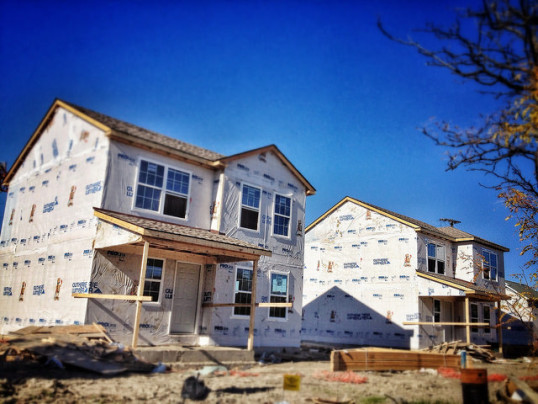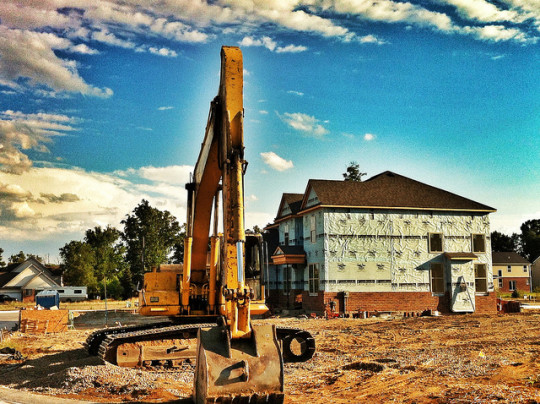Though careful not to say 2015 will be a breakout year for the housing market, Fannie Mae’s chief economist, Doug Duncan, believes the strengthening economy will drag housing activity upward this year. “Strength in the broader economy, accompanied by continued employment growth and meaningful income growth, should contribute to some improvement in housing activity,” Duncan said. The outlook – part of Fannie Mae’s Economic & Strategic Research Group’s monthly forecast – follows a rash of recent gains in both the economy and the residential real estate market. In fact, recent reports have found both existing and new home sales on the rise, in addition to improved construction activity and downward trending mortgage rates. This, combined with consistent job gains, falling gas prices, and the expectation of significant income growth this year, has analysts optimistic about 2015. It also has Americans feeling more confident in their financial situation and prospects. For these reasons, Fannie Mae is forecasting a 5.8 percent spike in home sales this year and a 19 percent improvement in the number of new homes built. According to Duncan, 2015 won’t be a breakout year for the housing market but there should be broad-based improvement following a disappointing and uneven 2014. More here.
Archive for January 2015
Mortgage Rates Still Hover Near Record Lows
According to the Mortgage Bankers Association’s Weekly Applications Survey, the average contract interest rate on 30-year fixed-rate mortgages increased slightly last week, though rates remain near record lows. Mortgage rates were up across all loan categories, including 30-year loans with jumbo balances, those backed by the Federal Housing Administration, and 15-year fixed-rate loans. Despite last week’s increase, rates still hover near historic lows and have been trending downward for several weeks. The downward trend is also partly responsible for the recent spike in home sales activity. Still, last week’s increase caused a decline in refinance activity, which fell 5 percent. Purchase activity, on the other hand, was relatively unchanged from the week before. The drop in demand follows a week when mortgage application volume rose to a six-month high. The MBA’s weekly survey has been conducted since 1990 and covers 75 percent of all retail residential mortgage applications. Last week’s results include an adjustment for the Martin Luther King holiday. More here.
New Home Sales Hit 6-Year High In December
In yet another sign that the housing market and economy continue to strengthen, new home sales hit their highest level in more than six years, according to December estimates released by the U.S. Census Bureau and the Department of Housing and Urban Development. Sales of newly built homes were up 11.6 percent over November and 8.8 percent above year-before levels. The improvement, combined with upward revisions to October and November’s estimates, represents a strong end-of-the-year finish for the sector. Overall, new homes sales finished 2014 up 1.2 percent over 2013’s figure. Analysts credit favorable mortgage rates, a stronger labor market, and unseasonably warm December weather across much of the country for the spike in sales. Also in the report, the medians sales price of new homes sold in December was $298,100; the average price was $377,800. At the current sales pace, there was a 5.5-month supply of new homes available for sale at the end of the month. A six-month supply is considered a healthy market. More here.
Robust Economy To Boost Housing Market
Last winter, mortgage rates were rising, economic growth was sluggish, and the polar vortex left much of the country in a deep freeze. The combined effect of these factors, plus rising home prices, meant the housing market got off to a slow start and stayed below expectation through the spring selling season. This winter, on the other hand, there are a number of positive economic indicators boosting Americans’ confidence and leading to an increasingly optimistic outlook for this year’s housing market. Frank Nothaft, Freddie Mac’s chief economist, is among those calling for a robust 2015. In his most recent Economic and Housing Market Outlook, Nothaft cites falling mortgage rates, solid job gains, improved economic growth, and the recent drop in retail gas prices among the reasons for optimism. “On balance, there are a lot of positive opportunities in the U.S. economy at the start of the year, and the real question is whether or not households and businesses will be able to seize these opportunities and make the most of them,” Nothaft writes. Freddie Mac is calling for increased home sales and construction activity this year, as well as boosted refinance volume while mortgage rates remain low. More here.
Home Sales End 2014 On The Rise
Despite the holiday season and declining available inventory, sales of previously owned homes rose 2.4 percent in December, according to the National Association of Realtors. The increase pushed sales 3.5 percent above last year’s level and marked the third consecutive month existing-home sales were up year-over-year. Lawrence Yun, NAR’s chief economist, said 2014 got off to a sluggish start but sales activity was encouraging the second half of the year. “Home sales improved over the summer once inventory increased, prices moderated, and economic growth accelerated,” Yun said. In fact, home sales during the second half of the year were 8 percent higher than the first six months of 2014. But despite the encouraging end to the year, Yun cautions that limited inventory may help drive prices up, which could offset the boosted demand from prospective buyers looking to take advantage of an improved economy and mortgage rates still hovering near historic lows. As of December, the median existing-home price for all housing types was $209,500, which is 6 percent higher than it was in December 2013. More here.
Construction Gains Are Good Sign For Housing
The most recent new residential construction estimates released by the U.S. Census Bureau and the Department of Housing and Urban Development show 2014 ending on an upswing. In fact, single-family housing starts – which refer to the number of homes that broke ground during the month – rose 7.2 percent in December and totals for the year were 8.8 percent above the 2013 figure. An estimated 1,005,800 housing units were started in 2014. Building permits – which are an indicator of future new home construction – also ended the year on a positive note. Single-family authorizations were up 4.5 percent from November’s figure and the total number of building permits authorized in 2014 came in 4.2 percent above the year before. The gains are an encouraging sign for the housing market and the economy as a whole, as new residential construction had been lagging behind the many economic indicators showing improvement last year. More here.
Falling Rates Push Mortgage Demand Higher
According to the Mortgage Bankers Association’s Weekly Applications Survey, demand for mortgage loan applications increased 14.2 percent last week. The increase was driven by a 22 percent spike in refinance activity. Mike Fratantoni, MBA’s chief economist, said the surge in refinance demand is largely due to mortgage rates falling to their lowest level since May 2013. In fact, mortgage rates fell again last week, dropping across all loan categories, including 30-year fixed-rate mortgages with both conforming and jumbo balances, loans backed by the Federal Housing Administration, and 15-year fixed-rate mortgages. Demand for purchase loan applications, on the other hand, slipped 3 percent on a seasonally adjusted basis, though they are up 5 percent from from one year ago. Also, the refinance share of total mortgage activity rose to 74 percent from 71 percent the previous week. That’s the highest it’s been since May 2013. The MBA’s weekly survey has been conducted since 1990 and covers 75 percent of all retail residential mortgage applications. More here.







